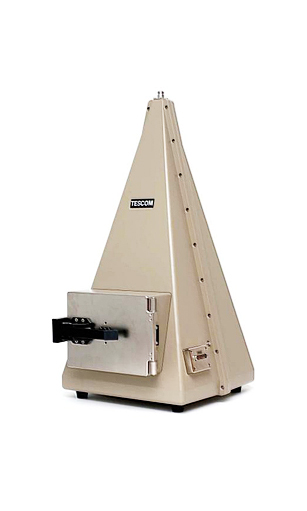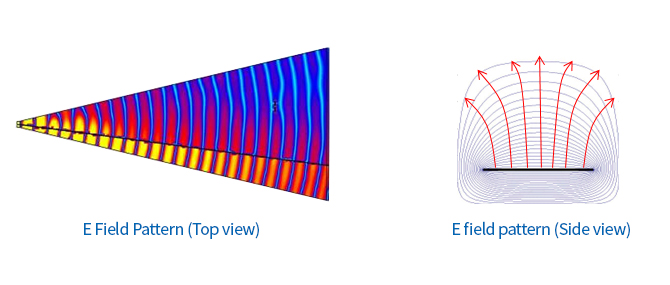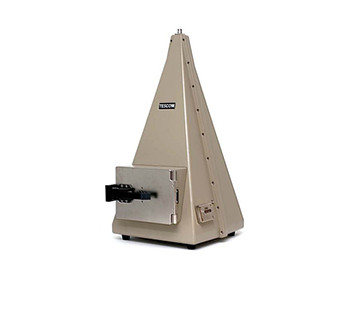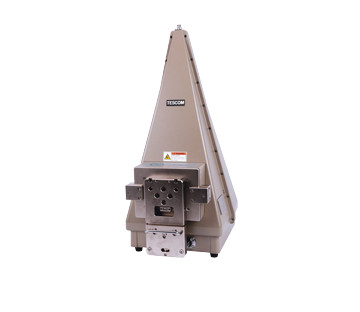INTRODUCTION
What is the TEM Cell ?
TEM (Transverse Electromagnetic) Cell is a device for generating a broadband standard electric field and measuring radiation power. It was developed in the 1970s by U.S. NBS Lab and is now used widely for EMI/EMS tests and more. When a user applys the RF test signal into the TEM Cell, a plain wave is generated inside. This measures the value of the path loss up to the DUT (Device Under Test) and examines the reaction of the DUT. Even when repeating the measurement, the TEM Cell maintains a constant path loss value with regard to the same test signal and same DUT location. Hence, it can be used for an OTA (Over The Air) measurement of wireless handsets. By contrast, if the user inserts a DUT that emits radiation inside, the abandoned electric power is generated on both the terminals of the TEM Cell by the radiation field and the user may measure it by a spectrum analyzer then calculate the Open Site equivalent radiation strength quantitatively.
TESCOM TEM Cell
A standard TEM Cell has two ports: one impresses the RF voltage and the other is finished by 50ohm that serves as a special impedance of the TEM Cell. Among the RF signals that inputs into the cell, the waveform that is deviated from the limited frequency does not maintain the TEM mode and resonates by sectional alteration of each part of the cell body. Preciously, the G-TEM Cell was made for solving this resonance problem by applying the radio wave absorbent to half of the cell.
However, since the G-TEM Cell was expensive to produce, required wide spaces and was limited in frequency, it was not really viable. Tescom improved this by minimizing its size and allowing the user to operate it without space limitations and over a wide frequency range (100MHz ~3GHz).
Thus, Tescom TEM Cell is now able to measure the absolute receiving sensitivity of small RF devices such as cell phones, WLAN, Bluetooth, DAB/DMB etc, and also test radio wave interference from RF parts easier and more accurately without the high costs of an anechoic chamber. Hence, it is highly appropriate technology for the measurement of radio waves.

- - Supports 100 ~ 6000 MHz
- - High RF Shielding
- - Measuring test of reception sensitivity: Transmitter Radiation Power Test
- - EMI and EMC tests for small devices
- - RS-232C Remote Control
- - CDMA, GSM, LTE, WiMAX, Wi-Fi, GPS/GLONASS, Bluetooth, etc.

| Model | Operaiton | Demension |
|---|---|---|
| TC-5062C | Manual | 344(W) x 403(D) x 675(H) mm |
| TC-5063C | Pneumatic | 344(W) x 420(D) x 725(H) mm, door closed. 614(D) mm, door open |



